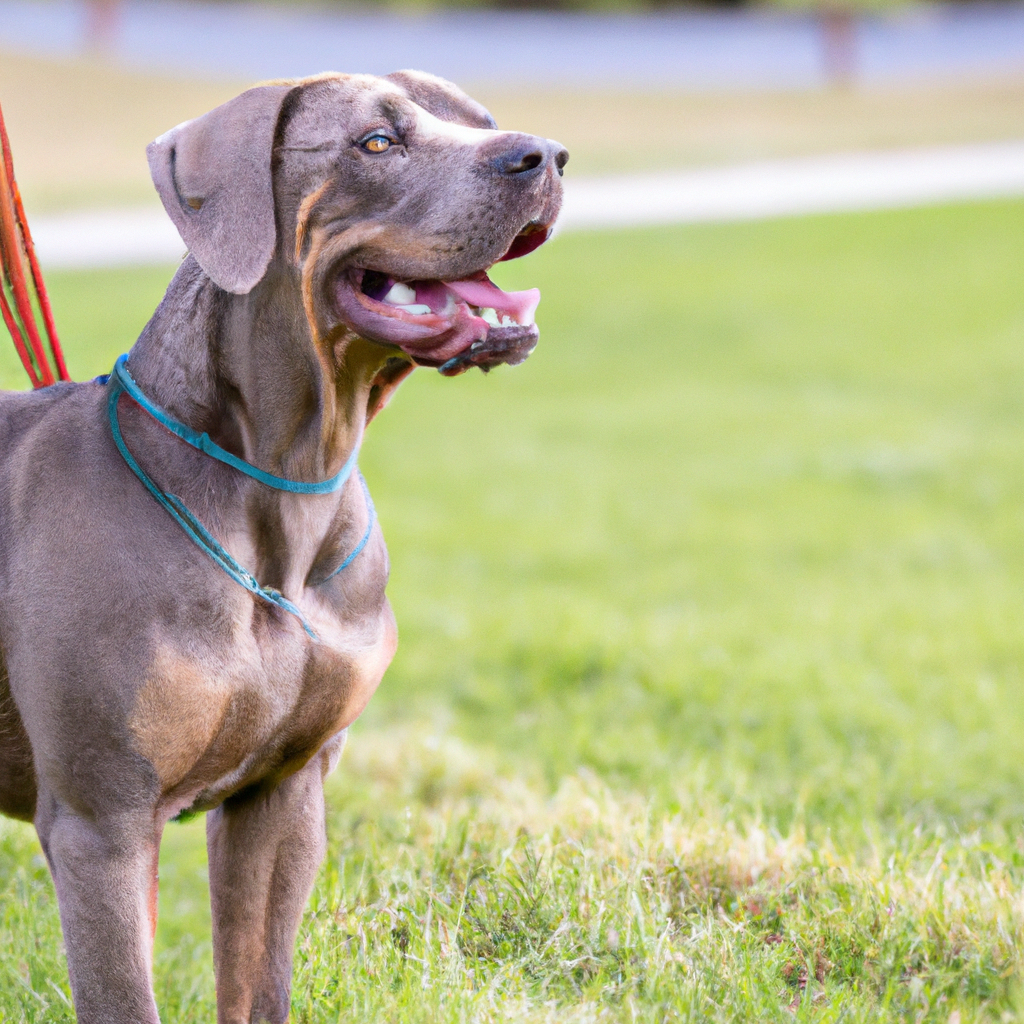How to Properly Leash Train Your Dog for Walks
Getting ready to explore the world with your furry companion? Leash training is the first step towards joyful walks.

Picture this: the sun is shining, a gentle breeze rustles through the lush green leaves, and you find yourself eagerly preparing for a delightful walk with your four-legged companion. As you reach for the leash, excitement courses through both you and your dog, but suddenly you’re met with chaos. Fido pulls, jumps, and tugs at the leash, leaving you feeling more like a kite struggling to stay grounded than a cohesive pair on a leisurely stroll. Fear not, dear reader, for in this article, we shall unravel the mysteries surrounding the art of leash training. So, fasten your seatbelt, grab a handful of treats, and prepare to embark on a marvelous journey toward mastering the fine art of proper leash training for your furry friend.
Getting Started: The Importance of Leash Training for Your Dog
Leash training is an invaluable skill that every dog owner should prioritize. It not only ensures the safety of your furry companion but also enhances your bond with them. By teaching your dog to comfortably wear a leash, you are opening doors to a world of adventure and exploration. Here are some key points highlighting the importance of leash training:
1. Safety First: A leash acts as a lifeline, keeping your dog under control and preventing them from running into hazardous situations. Whether you’re strolling through a busy street or hiking in the wilderness, having a leash-trained dog gives you peace of mind.
2. Improved Communication: Leash training facilitates better communication between you and your dog. As you guide them with the gentle guidance of the leash, it becomes easier to establish trust, reinforce commands, and redirect unwanted behaviors. The leash acts as a means of non-verbal communication, allowing you to guide and correct your dog’s behavior effectively.
3. Socialization Opportunities: When your dog is properly leash trained, you can confidently take them to public spaces, where they can interact with other dogs and people. This exposure helps them become more well-rounded and comfortable in various social settings.
4. Exercise and Mental Stimulation: Regular walks on a leash provide your dog with much-needed exercise and mental stimulation. It gives them the opportunity to explore new scents, sights, and sounds, which are essential for their overall well-being. Remember, a tired dog is a happy dog!
5. Freedom with Boundaries: Leash training doesn’t mean restricting your dog’s freedom—it means creating boundaries. The leash gives them the freedom to explore while ensuring they stay close by your side. This balance between autonomy and control creates a sense of security for your dog.
6. Legal Requirements: In many areas, leash laws are enforced to protect both dogs and humans. By leash training your dog, you are not only fulfilling your legal obligations but also showing respect and consideration for others in your community.
Leash training is an ongoing process that requires patience, consistency, and positive reinforcement. With time and practice, your dog will learn to walk alongside you with confidence and grace, making every outing a joyous experience for both of you.
Step-by-Step Guide to Leash Training: Building the Foundation
In order to successfully leash train your furry companion, it is crucial to establish a solid foundation. By following these steps, you can ensure that your pup becomes a confident and obedient walker.
1. Introduce the leash:
- Allow your dog to sniff and investigate the leash before attaching it to their collar.
- Attach the leash and let your dog walk around the house or in a calm environment to get used to the sensation of being tethered.
- Offer treats and praise to create positive associations with the leash.
2. Master the “heel” command:
- Teach your dog the “heel” command by holding a treat near your side and rewarding them for walking beside you.
- Practice “heel” indoors and gradually progress to walking outdoors in a controlled environment.
- Use a clicker or verbal cue to signal the desired behavior and reward your dog with treats whenever they maintain a good position.
Remember, consistency and patience are key when leash training your four-legged friend. Building a sturdy foundation will help pave the way for a lifetime of enjoyable walks together.

Mastering Walks: Effective Techniques for Leash Training
Are you tired of your dog tugging at the leash during walks, making it feel more like a wrestling match than a pleasant stroll? Fear not, because we have some foolproof techniques to help you master the art of leash training. Say goodbye to those frustrating walks and hello to a harmonious bonding experience with your furry friend.
1. Start with the basics: Before heading out on a walk, ensure that your dog is properly fitted with a comfortable collar or harness. This will prevent any discomfort or potential injury. Remember, an adjustable leash will give you more control over your dog’s movements. 2. Practice patience: Rome wasn’t built in a day, and neither is a perfectly behaved dog. Leash training takes time, so be patient and consistent with your efforts. Praise and reward your dog with treats whenever they exhibit the desired behavior, like walking calmly at your side. Reinforce positive behavior to make the experience enjoyable for both of you.

Troubleshooting Common Challenges: Overcoming Leash Training Issues
Leash training can sometimes present challenges, but with patience and consistency, you can overcome them! Here are some common issues dog owners face during leash training and tips on how to handle them:
1. Pulling on the Leash: If your furry friend constantly pulls on the leash, it can make walks frustrating and exhausting. Encourage loose leash walking by using positive reinforcement techniques such as treats and praise. Start with short walks in a quiet area and reward your dog regularly when they walk calmly by your side. Remember to avoid yanking on the leash or punishing your dog, as that can create anxiety and lead to more pulling.
2. Leash Reactivity: Does your dog become overly excited or aggressive when seeing other animals or people? This common challenge can make walks stressful for both you and your pup. To address leash reactivity, maintain distance from triggers and redirect your dog’s attention with commands or treats. Gradually decrease the distance between your dog and the trigger while rewarding calm behavior. Consistent training and socialization can play a vital role in reducing leash reactivity over time.
Concluding Remarks
As we wrap up this adventure into the world of leash training, may you and your furry companion stride forward with confidence and joy. Remember, Rome wasn’t built in a day, and neither is a perfectly polished pup on a leash.
Just like the day you brought your adorable ball of fluff home, leash training is a journey of patience, perseverance, and plenty of tail-wagging triumphs. Embrace the ups and downs, the sidetracks and detours, as your bond grows deeper with each step.
As you venture outside, wandering amidst the sights, sounds, and scents of the world, hold your leash with pride, knowing that you are guiding and protecting a loyal friend. Let the leash be a symbol of unity, a line connecting two souls on a shared journey of exploration and companionship.
As you encounter distractions, remember the lessons learned. Use your newfound understanding to gently redirect your pup’s focus, reminding them of the path you tread together. Your patience and consistency will shape your dog’s behavior, transforming them into a well-behaved and well-adjusted walking companion.
Let your walks be a symphony of twirling tails, wagging tongues, and boundless enthusiasm. Allow the vibrant hues of nature to paint the backdrop of your adventures, breathing life into every step you take. Cherish the moments of tranquility, the delight of discovery, and the unbreakable bonds forged through the simple act of walking side by side.
And so, as your dog begins to master the art of walking on a leash, remember to celebrate the milestones and savor the small victories. Take a moment to appreciate the synchronized rhythm of your footsteps and heartbeats, for it is in these uninterrupted moments that unspoken love resonates.
Leash training is more than a practical skill – it is an act of nurturing a relationship built on trust, respect, and unconditional love. Embrace this journey, relishing in the gift of companionship as you embark on countless adventures in this vast world.
So, go forth and explore, dear reader, with your newfound leash training knowledge in hand. May you and your pup conquer the streets, parks, and trails, radiating the harmony of a well-trained team. With every step you take, let the world witness the joy of a dog and their human, seamlessly connected by a simple piece of rope.
Remember, a leash is not just a tool; it is the invisible thread that binds hearts, promising a lifetime of cherished memories, and a bond that will never be broken.






